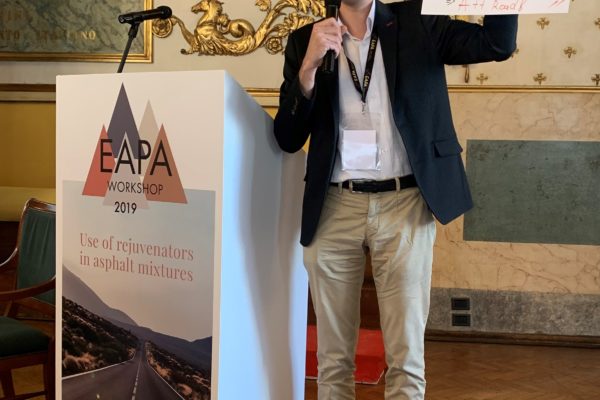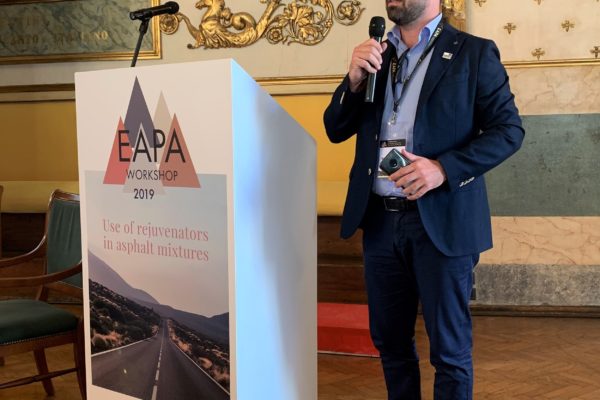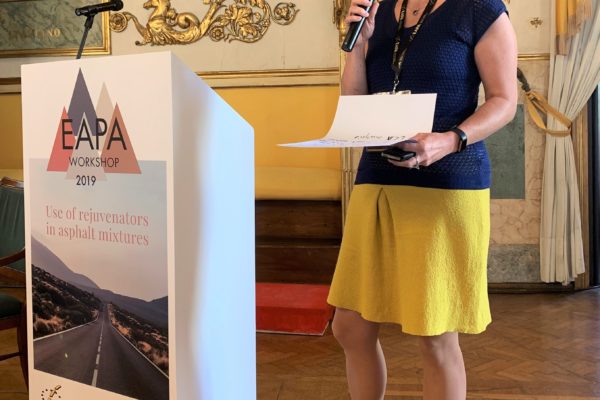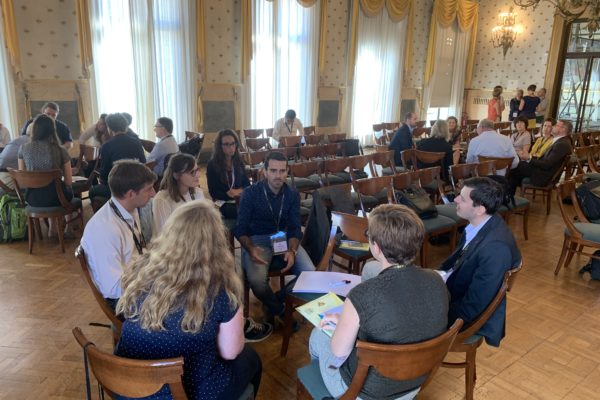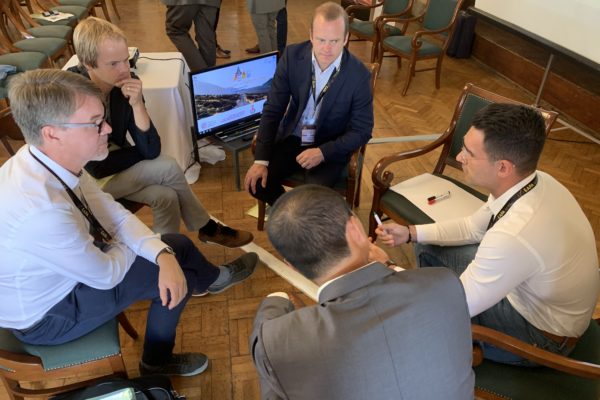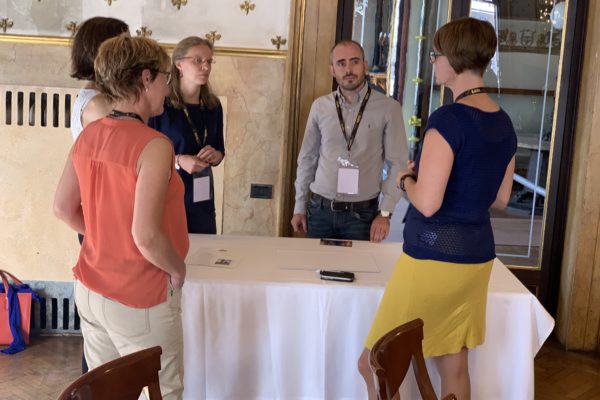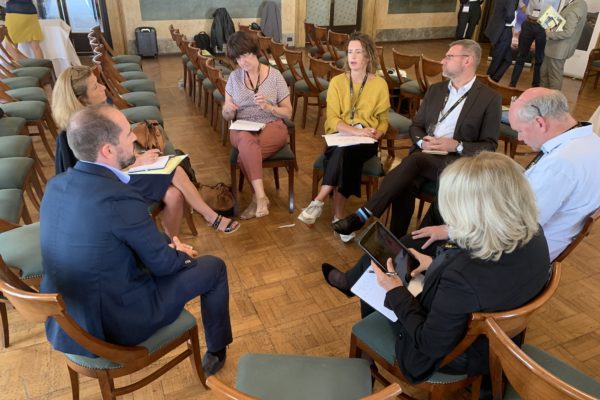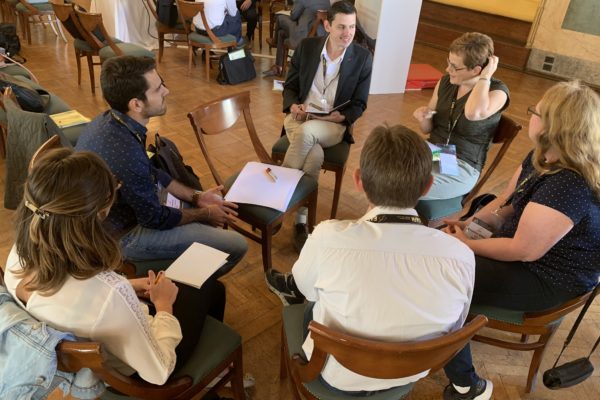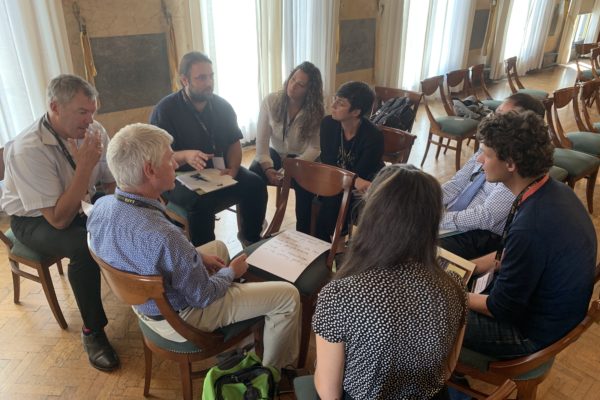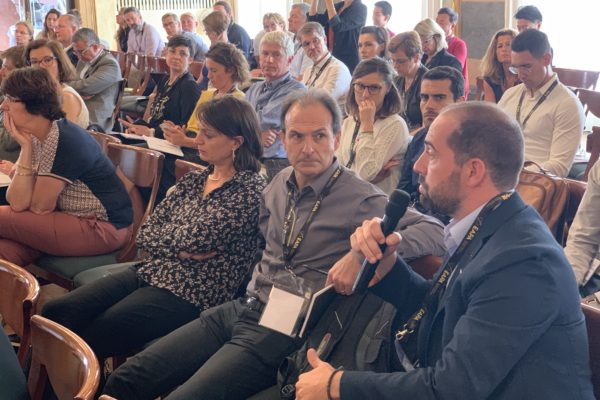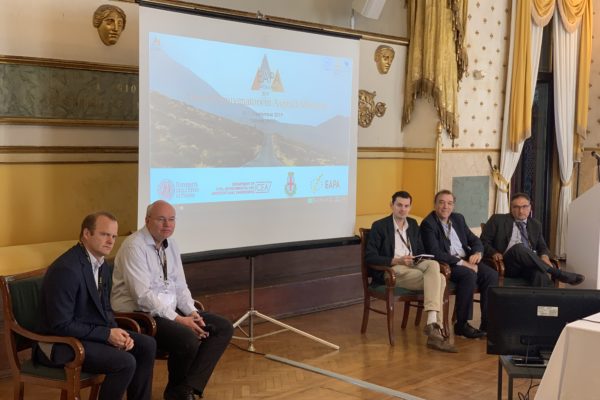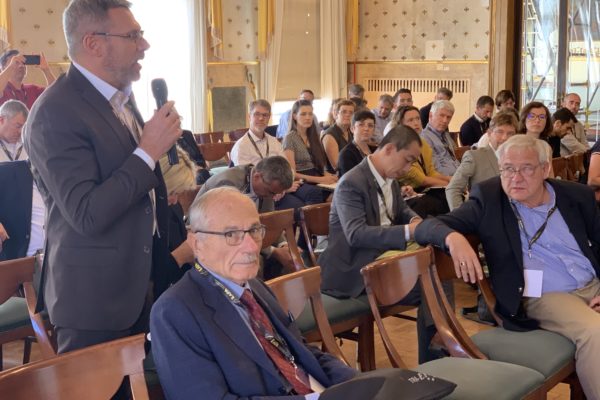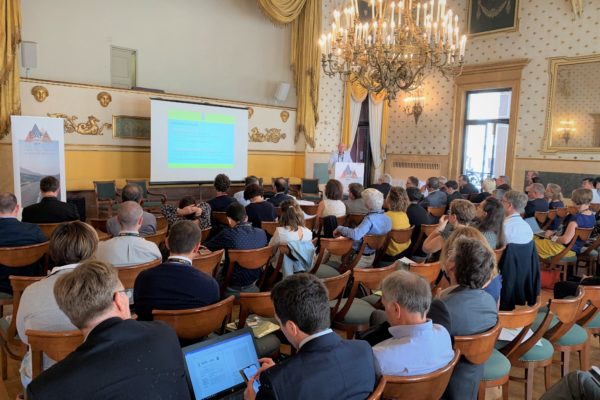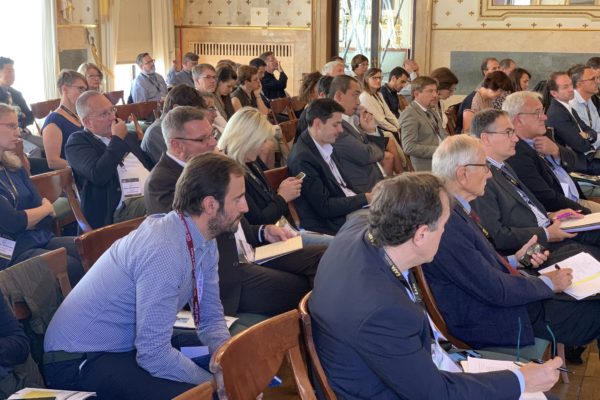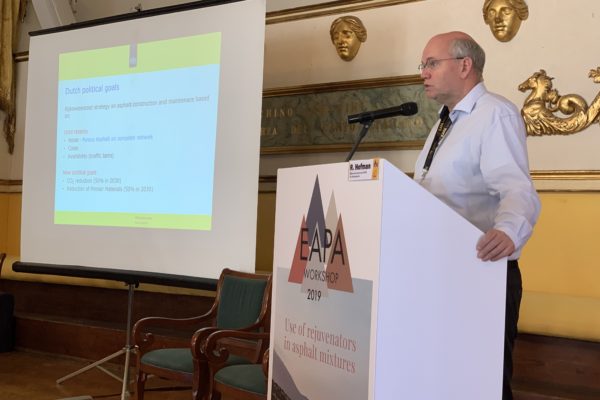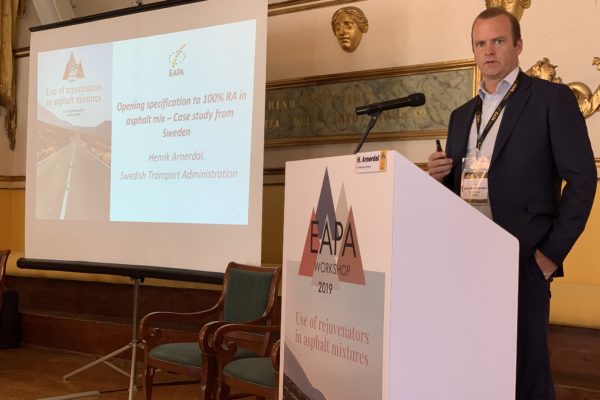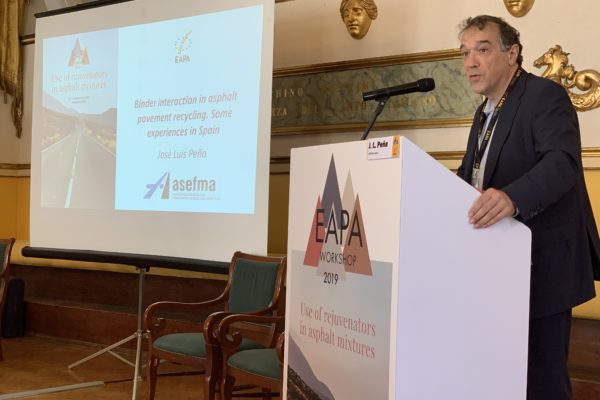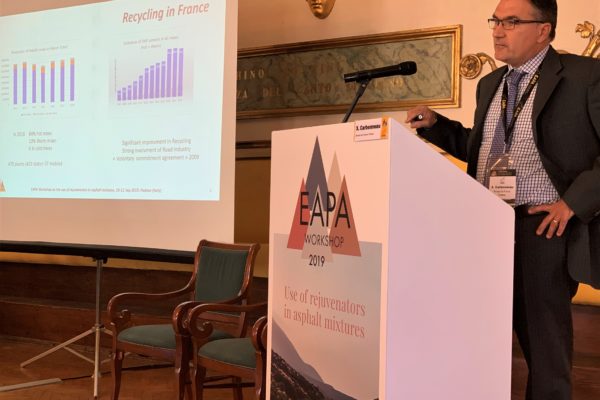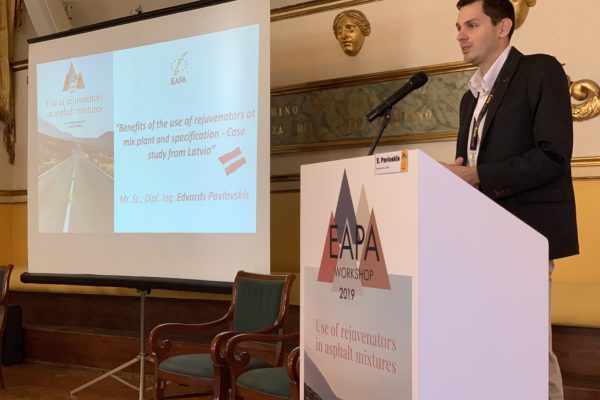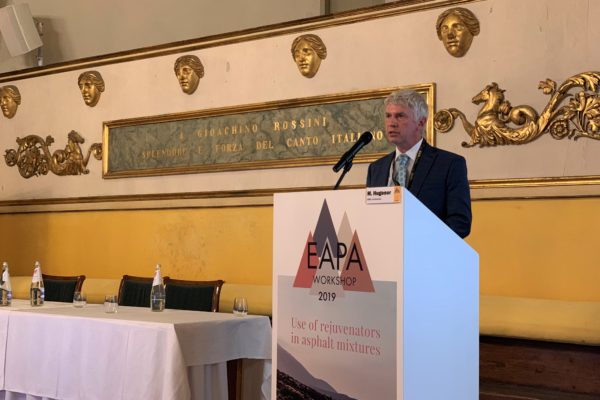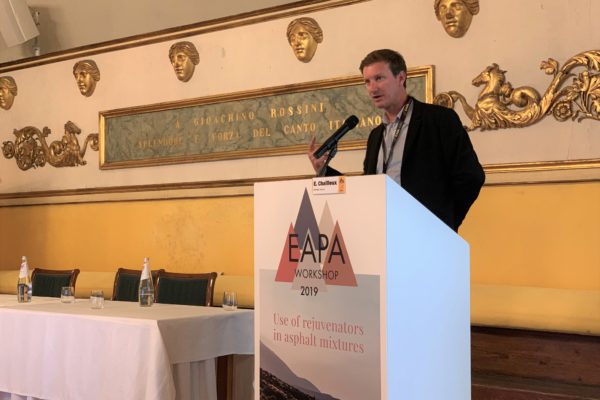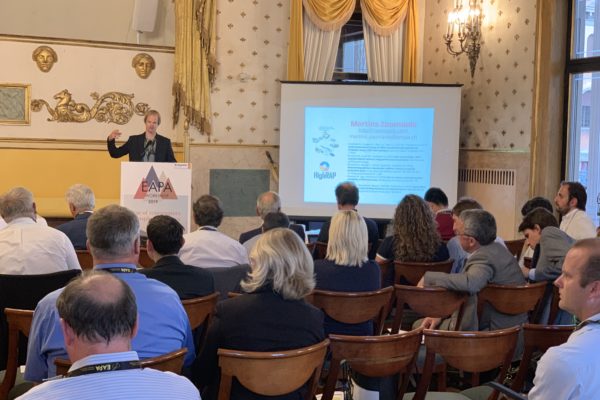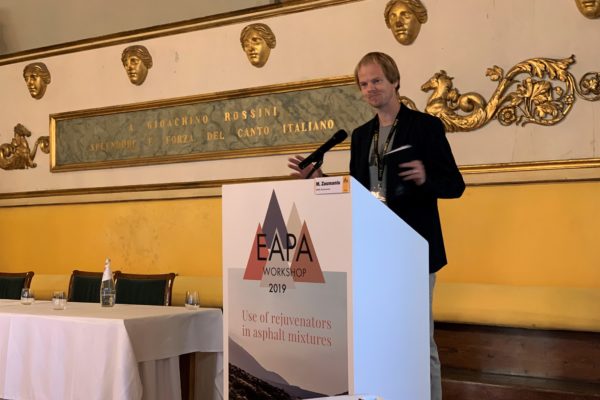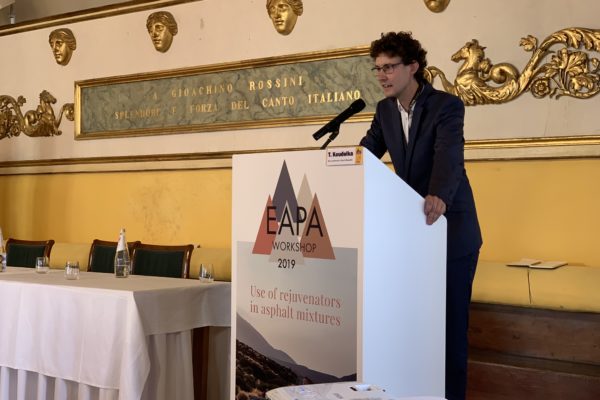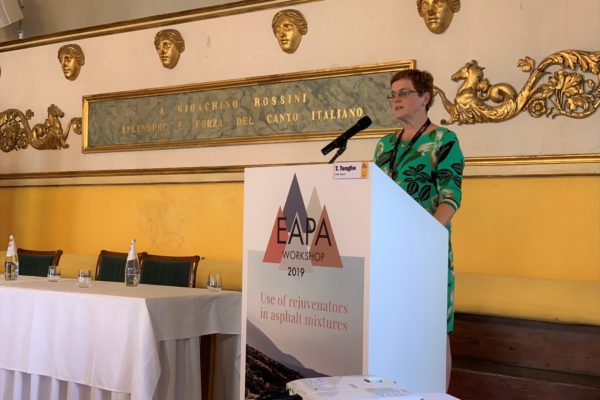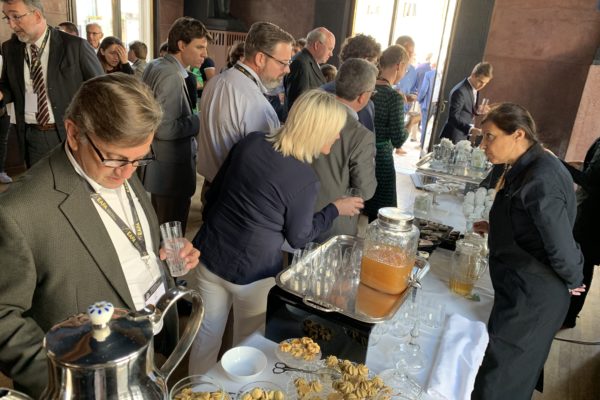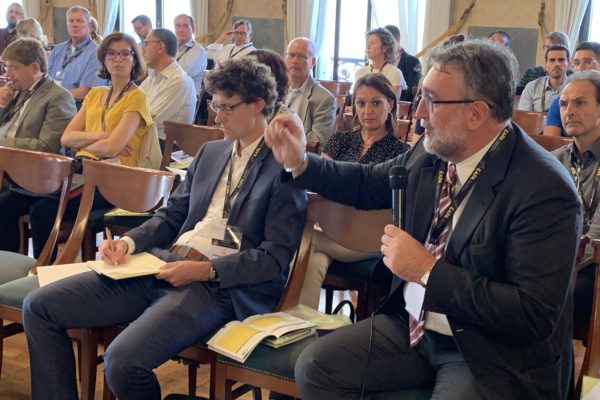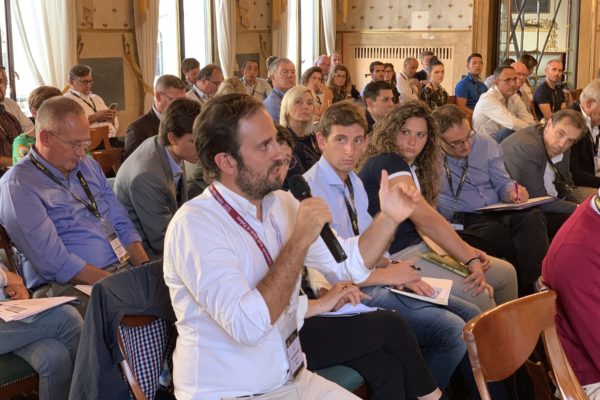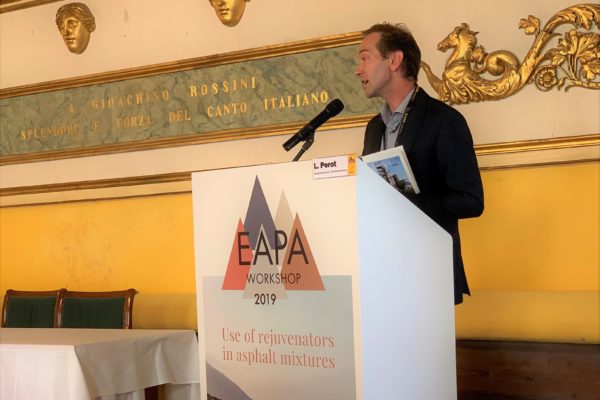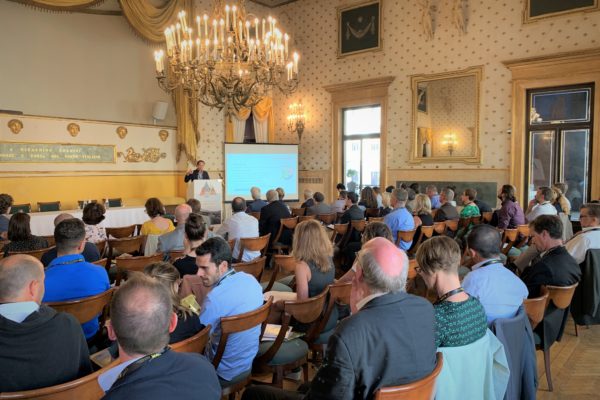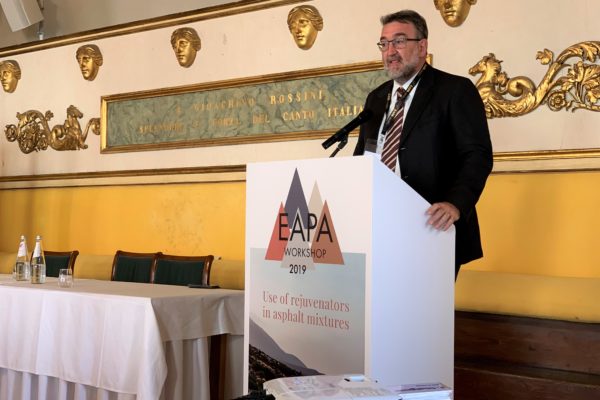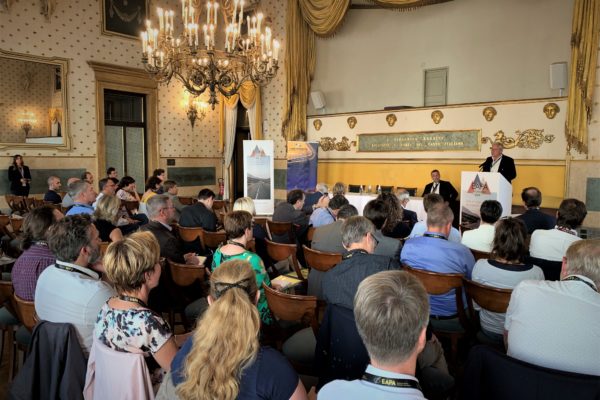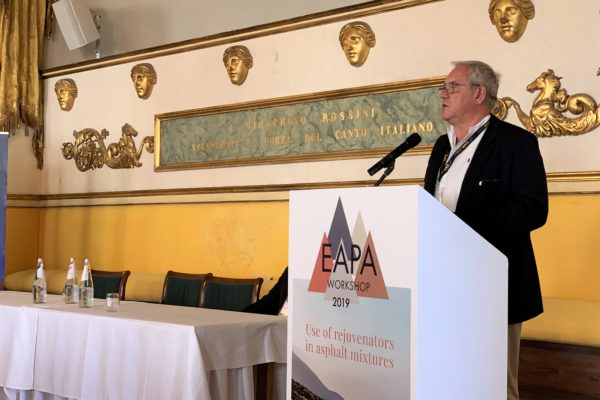10-11 September 2019 Padova (Italy)
Background
In December 2015, the EU Commission adopted a Circular Economy Action Plan with the aim to set the European Union “on the course of the transition towards a more sustainable model for economic development”. The action plan looks at the whole lifecycle of products and adopts a systemic approach that promotes partnerships along the entire value chain and across five priority sectors, among which is the “Construction and Demolition” sector.
In March 2019 the Commission published a Staff Working Document on the implementation of the Circular Economy Action Plan with 54 actions, with several actions affecting the way we will build and maintain the roads in the coming years. Among others, it can be highlighted the proposal for “New/revised EU green public procurement criteria integrating new circular economy requirements for road design, construction and maintenance”.
In this context, Asphalt is one of the best tools for our Administrations to meet such requirements, as at the end of its service life, it can be re-used 100% to build a new road. At the same time, current technologies allow the construction of new roads with a content of Reclaimed Asphalt up to 90% in hot and warm mixes and 100% in cold recycling.
One important technological milestone to achieve this was the use of rejuvenators, which, by restoring the flexibility, cracking resistance and rheological properties of the mix, without reducing other important properties, allow the addition of high quantities of reclaimed asphalt in new pavements.
There is nowadays an increasing demand to classify various products on the market as “rejuvenators” and a great deal of research projects on this topic. However, there is not any harmonised method for the assessment and classification of these products. In 2018, EAPA, the European Asphalt Pavement Association, published a Guidance Document where the best knowledge of each country was included, covering different levels, from plant to unit control.
Due to the great feedback received from the industrial community and with the aim of maximising the dissemination and outreach of EAPA’s work, the Association organised the 1st EAPA Workshop on the use of rejuvenators in asphalt mixtures.
The workshop was held on 10-11 September 2019 in Padova, beautiful historical city located in North-eastern Italy (30 km from Venice), at the Caffe Padrocchi (Rossini room) – Via VIII febbraio, n. 15 – 35122 Padova (Padua, Italy).
Summary of the Event
Opening
The event was opened by EAPA President François Chaignon and ISAP Representative Prof. Gabriele Tebaldi. The first, reminded the audience that Asphalt, is a road construction material that nowadays, in average terms, 68% is reused in the manufacture of new mixes and 19% is recycled as granular material in unbound road layers. Hence, it is already an essential tool for our Road Authorities to meet European goals of Circular Economy. Nevertheless, Asphalt Industry wants more and is still working to increase even further the amount of reclaimed asphalt we used in our new roads and, therefore, increase the sustainability of road construction.
On the other side, Prof. Tebaldi highlighted the importance of organising this Workshop on such a current hot topic and encouraged Academia, Industry and Road Authorities to join efforts in order to keep developing further the Asphalt Sector.
Presentation of EAPA Position Paper
Laurent Porot, one of the most active members of the EAPA Task Force “Rejuvenators”created for the elaboration of the EAPA Guidance Document for the Use of Rejuvenators in Hot and Warm Asphalt Production, presented the document on behalf of the Association.
Download presentation EAPA paper
Session 1 – Research innovations on the use of rejuvenators in asphalt
The first Technical Session was focused on the latest developments and research projects carried out in Europe.
Tine Tanghe, responsible for the Lab Mechanical & Physicochemical tests at Belgian Road Research Centre, presented the highlights and main results of the projects Re-RACE and REjuveBIT, aiming at evaluating binder and asphalt, designing an standard procedure ITT and evaluating lab conclusions through practical experiences and test sections, when Reclaimed Asphalt (RA) and rejuvenators are used.
Download presentation of Tanghe Tine
The second Speaker was Tomas Koudelka, who presented the highlights of a very extensive investigation carried out at Brno University of Technology (Czech Republic), with up to 13 different types of rejuvenators.
Download presentation of Koudelka Tomas
Martins Zaumanis, Researcher at EMPA research Centre in Switzerland, proposed a balanced mix design method for asphalt mixes with up to 100% RA content and rejuvenators, which allows mechanical performances even higher than the original (not-aged) mixes. He also studied what is the best place of the asphalt plant to add the rejuvenator and the problems of homogeneity in the RAP quality depending on its source.
Download presentation of Zaumani Martins
Emmanuel Chailleux, Researcher in the pavement department at IFSTTAR Research Centre in France, presented the highlights of the project Biorepavation, which among other things, assessed the environmental impacts of the combined use of bio-binders and 50%-70% RA content in asphalt mixes, performed a risk assessment, as well as a Life Cycle Assessment (LCA).
Presentation of Chailleux Emmanuel
Martin Hugener, Senior scientist at Empa Research Centre (Switzerland) presented the latest updates of the RILEM TC 264-RAP on Asphalt pavement recycling, where he co-coordinates the TG3 (together with Augusto Cannone Falcheto) on asphalt binders and additives for RA.
Download presentation of Hugener Martin
Session 2 – Industrial experience on using rejuvenators
The second session of the workshop focused on the experience of different countries using rejuvenators
Edvard Pavloskis explained the case of Latvia, the first country in Europe having put in place specificationsfor rejuvenators , in tenders,. In this process, carried out by the Latvian State Roads Specification work group, Mr Pavloskis, as member of the Latvian Road Builders Association, played an important role.
Download presentation of Pavlovskis Edvards
Xavier Carbonneau, from the French Association of Asphalt Manufacturers, presented the case of France and gave some highlights of the MURE project, where it was studied when mixes with RA are reused consecutive times.
Presentation of Carbonneau Xavier
José Luis Peña, from the Spanish Association of Asphalt Manufacturers (ASEFMA), talked about the evolution of techniques, design criteria and regulations used in Spain over the last decades, regarding the use of RA. He also presented the highlights of the Fenix project, focused on a balanced mix design methodology also supported by cracking/toughness tests.
Download presentation of Peña Jose Luis
Henrik Arnerdal, from the Swedish Road Authority Traffikverket, presented the case of Sweden, a country with very high objectives regarding circular economy and which is already opening specifications to 100% RA in asphalt mix.
Download presentation of Arnerdal Henrik
Finally, Rob Hofman, who works at the Pavement Materials group at the Dutch Road Authority Rijkswaterstaat and also participates in the Conference of European Director of Roads (CEDR), gave the vision of The Netherlands on sustainable asphalt.
Download presentation of Hofman Rob
Session 3 – Work in groups
Finally, all the participants worked in 6 groups. The first three provided respectively a list of knowledge gaps to further develop the use of rejuvenators and high RA contents, a list with the main barriers for the implementation of these solutions and a timeline with actions to further develop this topic in the coming years. The other three groups, designed different communication campaigns to promote different aspects of Asphalt Sector, contributing to improve its image and create awareness among society, Road Authorities and the other stakeholders involved.
All these outcomes, coming from the European experts on the topic, were received by EAPA as highly valuable inputs, which will be used to design the future lines of action.


